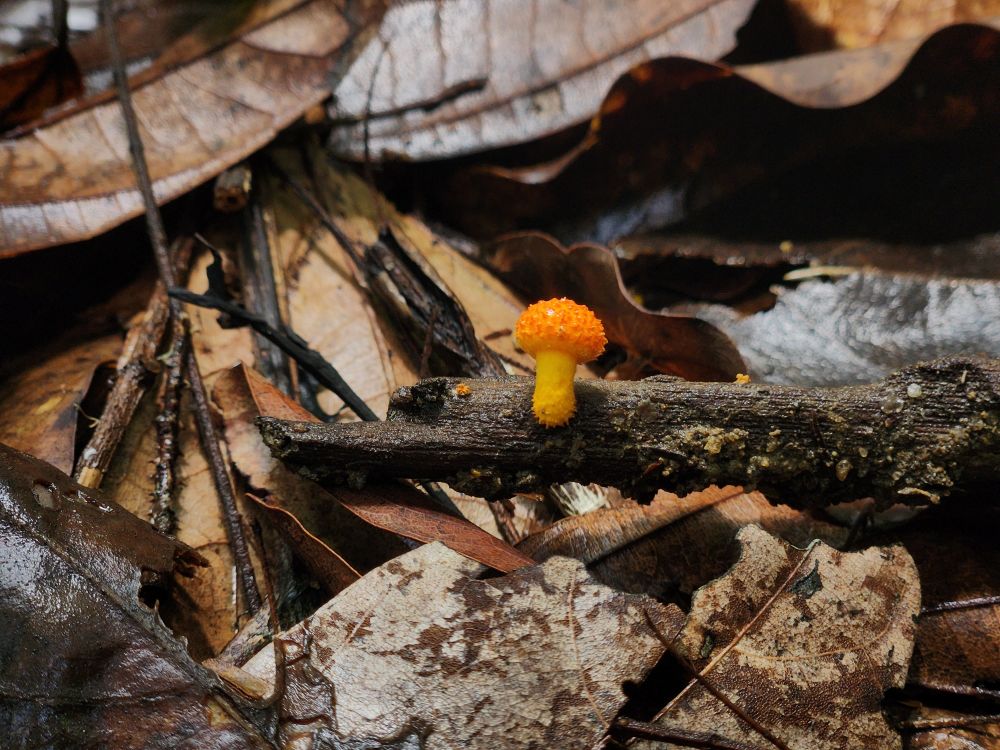
Founder & Lead Educator | 'Taiwan Nature Education' bilingual ecology education
Co-host/Biologist | 'Botanical wonders'
https://tinyurl.com/242w9hee
Hengchun Peninsula, Taiwan.
Often flowers (which become fruit) grow from positions on branches, often as individual flowers of various forms of flower clusters.
In some trees, the flowers grow directly on the trunk, like Baccaurea sp. (left) and many figs (Ficus; right)


Often flowers (which become fruit) grow from positions on branches, often as individual flowers of various forms of flower clusters.
In some trees, the flowers grow directly on the trunk, like Baccaurea sp. (left) and many figs (Ficus; right)




If you slow (and look!) down, there are captivating stories unfolding all over the forest floor.
Names of these mycological treasures: Marasmiaceae, Amanita, Cryptotrama, Unknown [infecting fruit of Barringtonia sp., probably racemosa]
#vietnam
#mycology #fungi




Afterwards: termites feast!
#Vietnam #nature #invertebrate
Afterwards: termites feast!
#Vietnam #nature #invertebrate
(and other woody matter):
Digesting lignin/cellulose in woody material is tough. To make them consumable, termites evolved 2 main strategies.
Internal digestion (most termites): gut bacteria digests
External digestion (Macrotermitinae): cultivate fungi to digest it for you!



(and other woody matter):
Digesting lignin/cellulose in woody material is tough. To make them consumable, termites evolved 2 main strategies.
Internal digestion (most termites): gut bacteria digests
External digestion (Macrotermitinae): cultivate fungi to digest it for you!
Prionobelum (97.6% sure)
Also known as pill millipedes, these are able to roll into a ball ("volvation") as a defense mechanism, which the flat backed millipedes (e.g., below) cannot do.
Equally cute, equally important!




Prionobelum (97.6% sure)
Also known as pill millipedes, these are able to roll into a ball ("volvation") as a defense mechanism, which the flat backed millipedes (e.g., below) cannot do.
Equally cute, equally important!
Found in the leaf litter in low to high elevation tropical to temperate forests (usually humid areas), these decomposers are not just beautiful but important contributors to nutrient cycling.
Left: #Taiwan
Right: #Vietnam


Their shells are thin & incomplete, & need to be covered by their skin ('mantle') which offers protection, camouflage, & secretes calcium carbonate to build more shell.
#Vietnam #snail




youtube.com/playlist?lis...

youtube.com/playlist?lis...



Our three year study found that a rare parasitic plant in #Taiwan is an annual, not perennial.
#Balanophora
onlinelibrary.wiley.com/doi/10.1002/...

Our three year study found that a rare parasitic plant in #Taiwan is an annual, not perennial.
#Balanophora
onlinelibrary.wiley.com/doi/10.1002/...
Because they are always beggin' ya to look at them.
Begonia....beggin' ya.....
...I'll show myself out now.
#(Bad)BotanicalHumour




Because they are always beggin' ya to look at them.
Begonia....beggin' ya.....
...I'll show myself out now.
#(Bad)BotanicalHumour
The tropics are notoriously difficult for starry skies, but when they arrive....Celestial splendor!
#taiwan


The tropics are notoriously difficult for starry skies, but when they arrive....Celestial splendor!
#taiwan
Orchid Island is undergoing a journey of burying the wires currently held aloft by the typhoon damaged cement poles. The results are - temporary - traffic congestion (island style) but the final result will be increased resilience against the next big one.


Orchid Island is undergoing a journey of burying the wires currently held aloft by the typhoon damaged cement poles. The results are - temporary - traffic congestion (island style) but the final result will be increased resilience against the next big one.
Hengchun, Taiwan
A swallowtail, without the tail!


Hengchun, Taiwan
A swallowtail, without the tail!
After a brief beetle ecology lesson at home, we transported it to a safe (wild) new home nearby!
#beetle #Taiwan


One of the most northerly of the ca. 1900 described Begonia species, this plant is found in the Philippines, Taiwan & some southerly Japanese islands. Flowering in winter, it can be seen along stream banks and wet slopes throughout Lanyu.




One of the most northerly of the ca. 1900 described Begonia species, this plant is found in the Philippines, Taiwan & some southerly Japanese islands. Flowering in winter, it can be seen along stream banks and wet slopes throughout Lanyu.
The unique blue colouration in this species makes it really stand out amongst the vibrant green foliage, but certainly has a protective (messaging) role in protecting against predators?

The unique blue colouration in this species makes it really stand out amongst the vibrant green foliage, but certainly has a protective (messaging) role in protecting against predators?





